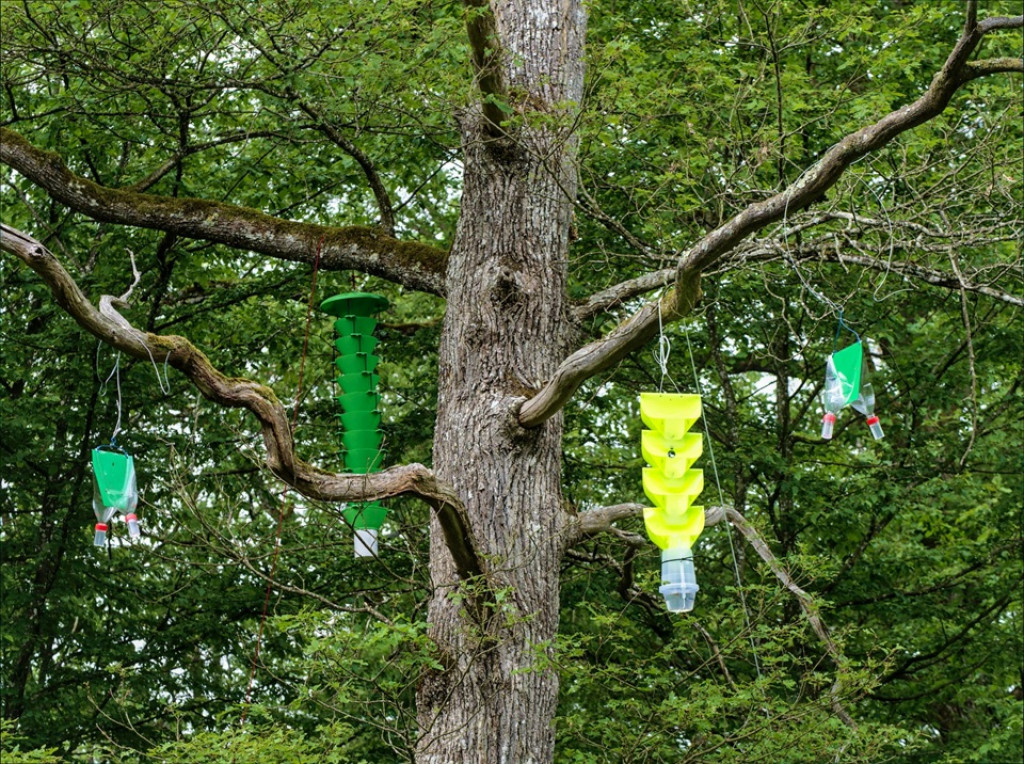The AGRITAP project is led by the CRA-W in partnership with other Belgian (ILVO, PCfruit and ULB) and international (INRAE in Orléans, France and the Canadian Forest Service in Canada) institutions. Its aim was to develop monitoring tools to correctly estimate population levels of native species of jewel beetles (belonging to the Agrilus genus in the Buprestidae family), and to optimise early detection of exotic species. To this end, we compared the efficiency of several traps in capturing European jewel beetles in deciduous forests and pear orchards. We tested different colours (green or yellow),shapes (commercial traps with multiple funnels and homemade bottle- or fan-traps), and presence or absence of a decoy (dead Agrilus planipennis specimen).
Fluorescent yellow for visibility
We collected 2,220 samples from 382 traps across 46 sites in Belgium and France over two years (2021–2022). None of the traps were effective in capturing Agrilus sinuatus in infested pear orchards (17 specimens captured over two years). The presence of a decoy did not influence capture rates, regardless of the trap model or jewel beetle species or or. In general, fluorescent yellow traps (multiple funnels and fan-traps) were more attractive than green traps. Most Agrilus species followed this trend, with the exception of Agrilus biguttatus. For the latter, a greater number of specimens was captured by green traps with multiple funnels.

Caption : Agrilus cyanescens. Photo : Gilles San Martin.
Increasing the number of monitoring locations
We observed a large variability in capture rates between sites: 64% of this variability was explained by the site effect, as opposed to 8.5% of the variability being linked to the trap types. Very few specimens were captured in a large number of sites, despite the presence of dying host trees that are favourable to the development of jewel beetles. For early detection of non-native species, it seems then essential to maximise the number of monitoring locations. In this context, the deployment of smaller traps that are easy to transport and set up, and less expensive, such as the fan-traps tested during this study, seems promising for monitoring jewel beetles. Preliminary trials conducted in Canada show that fan-traps can also capture non-native species such as Agrilus bilineatus (a pest of oak trees, which is considered to be at risk for Europe).
Funding: Euphresco project, funded by FPS Public Health (Project RI20/A337)






